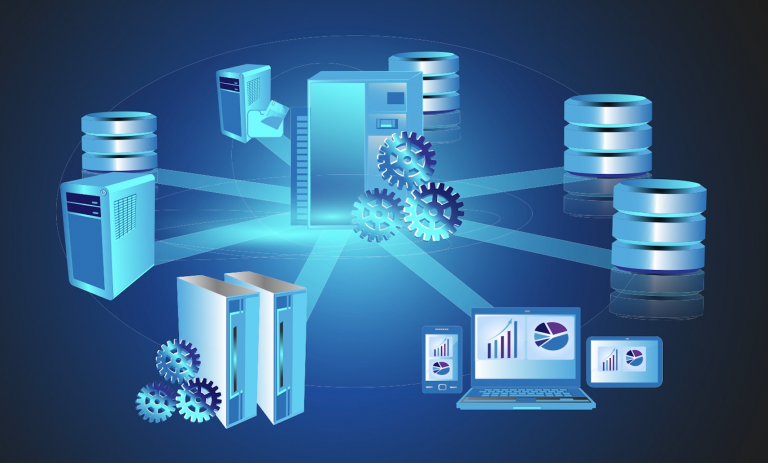
Decades ago, the only way for organizations to get powerful computing sources was using mainframes. Mainframes power banks, government agencies, aviation, insurance, healthcare and even retail. As a matter of fact, mainframes power 70% of today’s Fortune 100 companies. The power of mainframes was undeniably the only way to process millions of transactions a day, but it’s costly and requires enormous real estate to physically house equipment. Today’s cloud modernization provides the same reliability, power, security and scalability of mainframe systems at a fraction of the cost.
The cliche saying “if it isn’t broke, don’t fix it” drives many organizations to keep legacy mainframe applications at status quo and support them rather than move or replace them. It’s understandable why large enterprise businesses that depend on accurate, fast transactions keep their mainframe technology and stay apprehensive to change. Mainframes have long been the only computing resource for reliable transaction processing.
For years, mainframes had several advantages to standard servers. IBM has designed mainframes for over 50 years, and the company claims that mainframes have several security and performance advantages to help stop the excessive data breaches seen in the last few years. IBM claims that its mainframes power billions of ATM and credit card transactions per day, and it can provide 100% end-to-end encryption 18 times faster than a standard server at a fraction of the cost.
Reliability and scalability aren’t the only concerns. Moving such critical systems to a new platform requires hundreds of man hours and the quality assurance (QA) procedures must be flawless. Mistakes could cost consumers and the organization millions, and chasing bugs is not an option in many industries. The standard solution for most organizations is to keep the mainframe environment and avoid changes to the environment.
Old technology is reliable, but it comes with its disadvantages. The first disadvantage is the cost. To buy just a low-end mainframe, the cost is approximately $250,000. A high-end enterprise mainframe costs in excess of $750,000. The high cost of hosting a mainframe puts it out of reach for most average mid-size corporations.
If the organization can carry the cost of a new mainframe, the next requirement is real estate. More than just real estate, the space used to house the equipment must have the right temperature and humidity levels to avoid damage. The room must be monitored in case of cooling failure, and it must be physically secured from unauthorized access as well as natural disasters (e.g. flooding, fire, etc).
Because mainframes are legacy computing resources, the number of experts in the field is dwindling. Staff familiar with maintaining mainframe equipment is a rare find, and these experts charge a premium for their knowledge. Standard IT staff are unable to quickly debug and remediate issues related to mainframe systems.
A few other disadvantages and concerns:
Some organizations have recognized the need to modernize their environments, but they’ve made costly mistakes trying to avoid cloud migration while still harnessing the advantages of the cloud. Rewriting code with the latest language and framework often has costly effects that fail during migration. By writing their own platform, organizations add no new capabilities and often introduce scaling and reliability issues.
There is no one size fits all migration technique, but certain cloud providers offer transformation and modernization tools for mainframe environments including its data and applications. Google Cloud Platform is one such provider Kanda Software works heavily with to seamlessly migrate customers from on-premise resources to the cloud.
Writing your own platform limits capabilities when cloud resources are at your fingertips. Google Cloud Platform (GCP) has a specific service named G4 Platform that modernizes mainframe technology with cloud computing. It has support for COBOL, JCL, RPG, PL/1, and more. Kanda Software analyzes current mainframe technology, reverse engineers applications, and then forward engineers and refactors to a newer stack in the cloud.
The GCP infrastructure fully emulates an existing mainframe environment, but it has some added benefits. These include:
There’s no question that migrating a mainframe and its applications is a delicate procedure, but many of the processes can be automated after careful reverse engineering and testing. The three main approaches to migration are re-hosting workloads, batch-job migration and full re-engineering.
Every business is unique in its requirements and environment, so the type of migration is dependent on the business. Here is a brief overview of the three methods.
Regardless of the solution chosen, transferring resource-intensive applications to the cloud always reduces cost, gives organizations unlimited scaling capabilities, and provides agility to support the latest technology in future applications.
There aren’t many use cases publicly available for mainframe to GCP migration. Many organizations have the fear, uncertainty and doubt that it’s possible to do it successfully. Several large technology companies have moved to GCP including Shopify, Spotify, Evernote, Etsy, Waze, and GitLab. These organizations deal with hundreds of thousands of users and transactions where performance is necessary to keep customers happy and support businesses.
Here are a few considerations:



